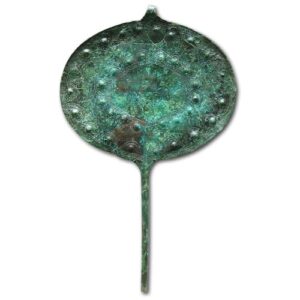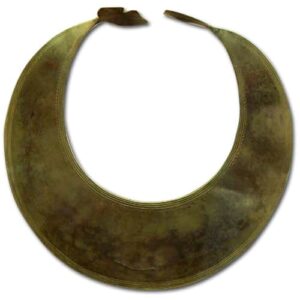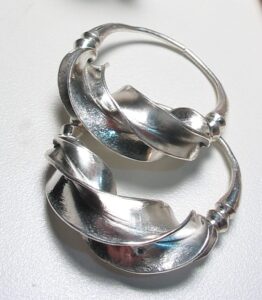
The Bronze Age is a term first introduced around 1830 by a Danish archaeologist called Thomson. He classified the periods of prehistory according to the materials that were used to manufacture cutting tools and weapons. For this, we thank the periods called Stone Age, Bronze Age and Iron Age.
One can’t put a definite date on these periods unless one considers places. Bronze was introduced at different times in different places. The exact origin of the invention of extracting copper and tin from their ore and smelting it into bronze is subject to discussion. Here it suffices to say that somewhere between the fourth and third millennium BC people discovered the techniques and that the technique became widespread during the 3rd millennium BC.
Bronze had several advantages over the stone tools that had been used until those days. It’s easier to shape, easier to sharpen, more durable and above all: recyclable. Bronze tools and ornaments could be repaired or smelted and cast into new ones. In regard to jewelry, it mainly replaced items that were made up out of bone and horn until then.
Due to the characteristics of the new material, the designs of the ornaments made from it were extremely innovative. One could make long, thin, wire-like elements as well as sturdy plate-like elements. It could be cast in a mold but also hammered into shape. Clothing pins, rings, bracelets, ankle bands and buttons are the novelties made out of bronze that form the foundation for all metalwork that we see today. Once the basic techniques had been mastered the next step was decoration. Stone, bone, horn, and wood had been decorated by carving but now new techniques like repoussé and chasing were possible.

Along with bronze, gold and silver were first worked during these times. The difference is that bronze is a man-made alloy and had to be manufactured from different components. Gold in its early days was found pure in alluvial deposits and could be hammered in shape straight from the original nugget. The first casting of gold followed around 2500 BC in Egypt, which is substantially later than the casting of bronze in that area around 3150 BC. That both bronze and gold belonged to the most precious possessions appears in archaeological excavations of royal graves where items of gold and bronze are laying side by side as grave gifts. Bronze ornaments and tools must have had a high prestige factor, just as jewelry does today.

The specialization of the metalsmith was another novelty the Bronze Age produced. Archaeological finds suggest the existence of traveling metalsmiths repairing objects, collecting scrap bronze and manufacturing new goods on the spot. The distribution of bronze tools and ornaments from ore-bearing areas to places without access to copper and tin deposits indicates long-distance trading. One shouldn’t think of single tradesmen traveling long distances but rather an increase in contact with neighbouring tribes. This extensive trade in itself has been an important event in the history of mankind. New techniques, products, and cultural habits became dispersed over vast distances through the trade. Local materials such as gemstones and gold would have found their way to new places along with bronze tools, ornaments, and ores over these new trading routes of interlinked contacts.
Sources
- Bloemers & v. Dorp et al, Pre- & Protohistorie van de Lage Landen, Open Universiteit 1996.
- Stefan Alexandrov, Golden Jewellery from a 2nd Millennium BC Tumulus Grave at Ovchartsi, Radnevo District
- Joseph Maran, Seaborne Contacts between the Aegean, the Balkans and the Central Mediterranean in the 3rd Millennium BC – The Unfolding of the Mediterranean World